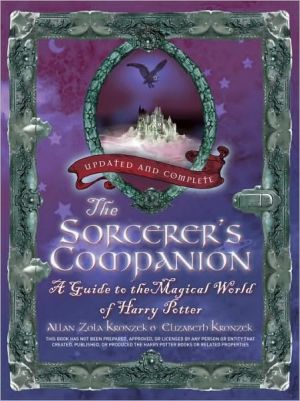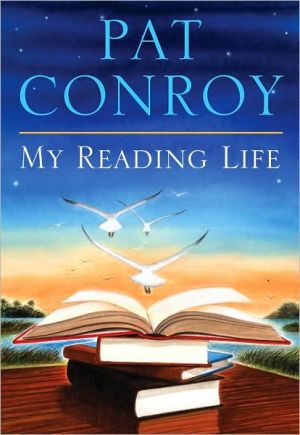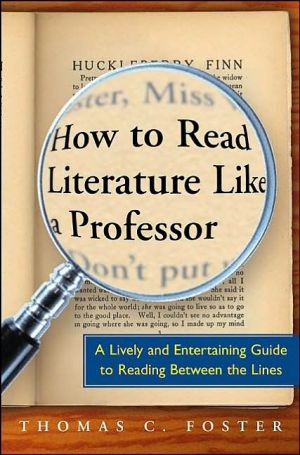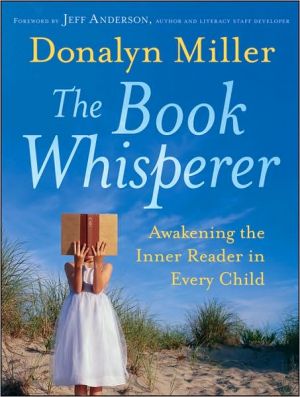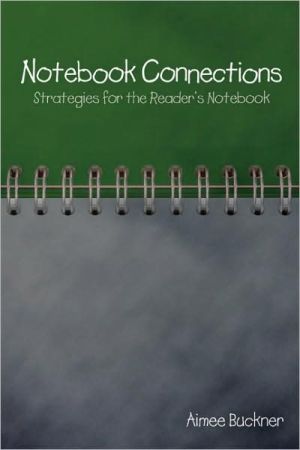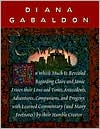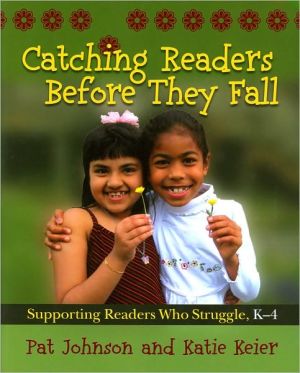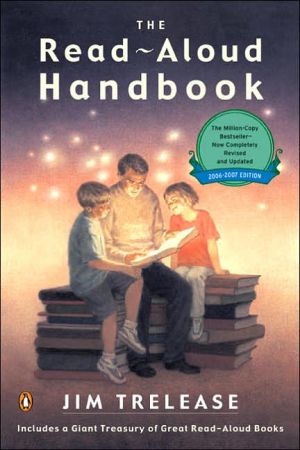Exploring Literature: Writing and Arguing about Fiction, Poetry, Drama, and the Essay
Search in google:
Culturally rich and diverse literature, comprehensive coverage of the writing process, and strong coverage of arguing about literature describe this anthology. The first five chapters are dedicated to writing and arguing about literature followed by an anthology organized around five themes: Family and Friends; Innocence and Experience; Women and Men; Culture and Identity; and Faith and Doubt. Case studies on the work of significant writers and their life and times end every thematic section. Changes to the new edition include the integration of MyLiteratureLab, Pearson's state-of-the-art, web-based interactive learning system; a more unified, step-by-step presentation of the writing process; new selections from contemporary and global writers; an enhanced discussion of peer review; and double the number of "Connecting through Comparison" subtheme clusters throughout the anthology.
I. MAKING CONNECTIONS1. Participation: Personal Response and Critical ThinkingThe Personal Dimension of Reading LiteraturePersonal Response and Critical ThinkingWriting to LearnYour First ResponseChecklist: Your First ResponseKeeping a Journal or Reading LogDouble-Entry Journals and LogsThe Social Nature of Learning: CollaborationPersonal, Not PrivateOurselves as ReadersDifferent Kinds of ReadingPETER MEINKE, Advice to My SonMaking Connections with LiteratureImages of OurselvesConnecting Through ExperiencePAUL ZIMMER, Zimmer in Grade SchoolConnecting Through ExperienceCulture, Experience, and ValuesConnecting Through ExperienceROBERT HAYDEN, Those Winter SundaysConnecting Through ExperienceMARGE PIERCY, Barbie DollBeing in the MomentNEW YORK TIMES, “Birmingham Bomb Kills 4”DUDLEY RANDALL, Ballad of BirminghamParticipating, Not SolvingUsing Our ImaginationsThe Whole and Its Parts2. Communication: Writing a Response Essay The Response EssayChecklist: The Basics of a Response EssayVoice and WritingVoice and Response to LiteratureConnecting Through ExperienceCOUNTEE CULLEN, IncidentWriting to DescribeChoosing DetailsChoosing Details from LiteratureConnecting Through ExperienceSANDRA CISNEROS, ElevenWriting to CompareComparing and Contrasting Using a Venn DiagramConnecting Through ExperienceANNA QUINDLEN, MothersConnecting Through ExperienceLANGSTON HUGHES, SalvationPossible WorldsFrom First Response to Final DraftThe Importance of RevisionUsing Your First ResponseUsing First or Third Person in Formal EssaysII. ANALYSIS, ARGUMENTATION, AND RESEARCH3. Exploration and Analysis: Genre and the Elements of LiteratureClose ReadingAnnotating the TextFirst Annotation: ExplorationPERCY BYSSHE SHELLEY, OzymandiasSecond Annotation: AnalysisLiterature in Its Many ContextsYour Critical ApproachReading and Analyzing FictionSummary Checklist: Analyzing FictionNarrationPoint of ViewSettingConflictPlotCharacterLanguage and StyleDictionSymbolIronyThemeGetting Ideas for Writing About FictionKATE CHOPIN, The Story of an HourReading and Analyzing PoetrySummary Checklist: Analyzing PoetryLanguage and StyleDenotation and ConnotationVoiceToneIronySTEPHEN CRANE, War Is KindImageryHELEN CHASIN, The Word PlumROBERT BROWNING, Meeting at NightParting at MorningFigurative Language: Everyday PoetryLANGSTON HUGHES, A Dream DeferredN. SCOTT MOMADAY, SimileCARL SANDBURG, FogJAMES STEPHENS, The WindSymbolROBERT FROST, The Road Not TakenSound and StructureRhyme, Alliteration, and AssonanceFinding the Beat: LimericksMeterFormal Verse: The SonnetWILLIAM SHAKESPEARE, Sonnet No. 29Blank VerseFree or Open Form VerseWALT WHITMAN, When I Heard the Learn’d AstronomerInterpretation: What Does the Poem Mean?ExplicationTypes of PoetryLyric PoetryNarrative PoetryGetting Ideas for Writing About PoetryMAY SWENSON, Pigeon WomanReading and Analyzing DramaSummary Checklist: Analyzing DramaReading a PlayPoint of ViewSet and SettingConflictPlotThe PoeticsTragedyComedyCharacterizationLanguage and StyleDictionSymbolIronyThemePeriods of Drama: A Brief BackgroundGreek DramaShakespearean DramaModern DramaGetting Ideas for Writing About DramaTips on Reading AntigonêSOPHOCLES, AntigonêReading and Analyzing EssaysSummary Checklist: Analyzing EssaysTypes of EssaysNarrativeExpositoryArgumentativeLanguage, Style, and StructureFormal or InformalVoiceWord Choice and StyleTheme or Thesis: What’s the Point?The Aims of an Essay: Inform, Preach, or RevealGetting Ideas for Writing About the EssayAMY TAN, Mother Tongue4. Argumentation: Writing a Critical EssayThe Critical EssayInterpretation and EvaluationInterpretation: What Does it Mean?Evaluation: How Well Does it Work?Options for a Critical Essay: Process and ProductChecklist: Options for a Critical EssayAn Analytical EssayA Comparative EssayA Thematic EssayA Philosophical or Ethical EvaluationA Contextual EssayArgumentation: Writing a Critical EssayThe Shape of an ArgumentPlanning Your ArgumentSupporting Your Argument: Induction and SubstantiationOpening, Closing, and Revising Your ArgumentThe Development of a Critical Essay5. Research: Writing with Secondary SourcesThe Research EssayCreating, Expanding, and Joining Interpretive CommunitiesIt Is Your InterpretationGetting StartedChoosing a TopicSome Popular Areas of Literary ResearchYour SearchPeer SupportThe LibraryReference WorksFinding Sources on the InternetEvaluating Internet SourcesChecklist: Evaluating Internet SourcesIntegrating Sources into Your WritingWhat Must Be DocumentedWhere and HowParaphrasing and SummarizingQuotingAvoiding PlagiarismFrom First Response to Research EssayChecklist: Writing a Research EssayCASE STUDY IN RESEARCHStep 1: Using Your First ResponseJAMES JOYCE, EvelineStep 2: Composing a DraftProf. Devenish’s CommentaryStep 3: Revising the EssayStep 4: Kevin’s Revised EssayIII. A THEMATIC ANTHOLOGYFAMILY AND FRIENDSA Dialogue Across HistoryFamily and Friends: Exploring Your Own Values and BeliefsReading and Writing About Family and FriendsFictionConnecting through Comparison: Sibling Relationships***JAMES BALDWIN, Sonny’s BluesLOUISE ERDRICH, The Red ConvertibleCHINUA ACHEBE, Marriage Is a Private AffairJOHN CHEEVER, ReunionLINDA CHING SLEDGE, The RoadConnecting through Comparison: Parents and Children*** AMY TAN, Two KindsJULIA ALVAREZ, DustingJANICE MIRIKITANI, For My FatherTHEODORE ROETHKE, My Papa’s WaltzCATHY SONG, The Youngest DaughterMARGARET ATWOOD, Siren SongJOHN CIARDI, Faces***ROBERT FROST, Mending WallSEAMUS HEANEY, DiggingPHILIP LARKIN, This Be the VerseLI-YOUNG LEE, The GiftSHARON OLDS, 35/10WILLIAM STAFFORD, Friends ***STEVIE SMITH, Not Waving But DrowningConnecting Through Comparison: RemembranceELIZABETH GAFFNEY, Losses That Turn Up in DreamsWILLIAM SHAKESPEARE, When to the Sessions of Sweet Silent Thought (Sonnet No. 30)DramaTENNESSEE WILLIAMS, The Glass MenagerieEssaysBELL HOOKS, Inspired EccentricityCHRISTINE O’HAGAN, Friendship’s Gift***CASE STUDY IN BIOGRAPHICAL CONTEXTThinking About Interpretation and BiographyLorraine Hansberry and A Raisin in the SunLORRAINE HANSBERRY, A Raisin in the SunLorraine Hansberry–In Her Own WordsIn Others’ WordsJAMES BALDWIN, Sweet LorraineJULIUS LESTER, The Heroic Dimension in A Raisin in the SunANNE CHENEY, The African Heritage in A Raisin in the SunSTEVEN R. CARTER, Hansberry’s Artistic MisstepMARGARET B. WILKERSON, Hansberry’s Awareness of Culture and GenderMICHAEL ANDERSON, A Raisin in the Sun: A Landmark Lesson in Being BlackA Student’s Research EssayExploring the Literature of FAMILY AND FRIENDS: Options for Making Connections, Building Arguments, and Using ResearchINNOCENCE AND EXPERIENCEA Dialogue Across HistoryInnocence and Experiences: Exploring Your Own Values and BeliefsReading and Writing About Innocence and ExperienceFictionConnecting through Comparison: Illusion and DisillusionLILIANA HEKER, The Stolen PartyJAMES JOYCE, ArabyJULIA ALVAREZ, SnowTONI CADE BAMBARA, The LessonTHOMAS BULFINCH, The Myth of Daedalus and IcarusRALPH ELLISON, Battle RoyalHARUKI MURAKAMI, On Seeing the 100% Perfect Girl One Beautiful April Morning***JOYCE CAROL OATES, WHERE ARE YOU GOING, WHERE HAVE YOU BEEN?FRANK O’CONNOR, Guests of the NationTWO READERS/TWO DIFFERENT VIEWS: JOHN UPDIKE, A&PTwo Sample Student EssaysPoetryConnecting Through Comparison: Images of Innocence and Experience WILLIAM BLAKE, LondonWILLIAM WORDSWORTH, Composed Upon Westminster Bridge,September 3, 1802Connecting Through Comparison: The Chimney SweeperWILLIAM BLAKE, The Chimney Sweeper (From Songs of Innocence), The Chimney Sweeper (From Songs of Experience)A. E. HOUSMAN, When I Was One-and-TwentyALBERTO RIOS, In Second Grade Miss Lee I Promised Never to Forget You and I Never Did***EDWIN ARLINGTON ROBINSON, Richard CoryANNE SEXTON, Pain for a DaughterWALT WHITMAN, There was a Child Went ForthSTEPHEN CRANE, The WayfarerConnecting through Comparison: Young Death***ROBERT FROST, “Out, Out ...”SEAMUS HEANEY, Mid-Term BreakEssaysDAN BARRY, Hurricane Katrina: The Corpse on Union StreetJUDITH ORTIZ COFER, I Fell in Love, or My Hormones AwakenedDAVID SEDARIS, The Learning CurveCASE STUDY IN THEATRICAL CONTEXTInterpretation and PerformanceMultiple Interpretations of HamletWILLIAM SHAKESPEARE, Hamlet, Prince of DenmarkDesperately Seeking Hamlet: Four InterpretationsOlivier’s HamletJacobi’s HamletGibson’s HamletBranagh’s HamletFrom Part to Whole, From Whole to PartA Student’s Critical Essay–An Explication and Analysis of the “To Be, or Not To Be” SoliloquyHAMLET ON SCREENA Critic’s Influential InterpretationErnest Jones, Hamlet’s Oedipus ComplexHamlet On ScreenBernice Kliman, The BBC Hamlet: A Television ProductionClaire Bloom, Playing Gertrude on TelevisionStanley Kauffmann, At Elsinore: Branagh’s HamletRussell Jackson, A Film Diary of the Shooting ofKenneth Branagh’s HamletExploring the Literature of INNOCENCE AND EXPERIENCE: Options for Making Connections, Building Arguments, and Using ResearchCASE STUDY IN AESTHETIC CONTEXTPIETER BRUEGHEL, Landscape with the Fall of Icarus / W. H. AUDEN, Musée des Beaux Arts and ALAN DEVENISH, Icarus AgainJACOPO TINTORETTO, Crucifixion / N. SCOTT MOMADAY, Before an Old Painting of the CrucifixionEDWARD HOPPER, Nighthawks / SAMUEL YELLEN, NighthawksVINCENT VAN GOGH, Starry Night / ANNE SEXTON, The Starry NightHENRI MATISSE, Dance / NATALIE SAFIR, Matisse’s DanceUTAMARO, Two Women Dressing their Hair/ CATHY SONG, Beauty and Sadness***EDWIN ROMANZO ELMER, The Mourning Picture / ADRIENNE RICH, Mourning PictureJAN VERMEER, The Loveletter / SANDRA NELSON, When a Woman Holds a LetterA Student’s Comparison and Contrast Essay: Process and ProductExploring POETRY AND PAINTING: Options for Making Connections, Building Arguments, and Using ResearchWOMEN AND MENA Dialogue Across HistoryWomen and Men: Exploring Your Own Values and BeliefsReading and Writing About Women and MenFictionROBERT OLSEN BUTLER, Jealous Husband Returns as a Parrot***CHARLOTTE PERKINS GILMAN, The Yellow WallpaperERNEST HEMINGWAY, Hills Like White ElephantsD. H. LAWRENCE, The Horse Dealer’s DaughterBOBBIE ANN MASON, ShilohROSARIO MORALES, The Day It HappenedGLORIA NAYLOR, The Two***PoetryConnecting Through Comparison: Be My LoveCHRISTOPHER MARLOWE, The Passionate Shepherd to His LoveWALTER RALEIGH, The Nymph’s Reply to the ShepherdANDREW MARVELL, To His Coy MistressMAYA ANGELOU, Phenomenal WomanMARGARET ATWOOD, You Fit into MeELIZABETH BARRETT BROWNING, How Do I Love Thee?ROBERT BROWNING, Porphyria’s LoverNIKKI GIOVANNI, WomanJUDY GRAHN, Ella, in a Square Apron, Along Highway 80DONALD HALL, The Wedding Couple***ESSEX HEMPHILL, CommitmentsMICHEAL LASSELL, How to Watch Your Brother DieEDNA ST. VINCENT MILLAY, What Lips My Lips Have Kissed, and Where, and Why; Love Is Not AllSHARON OLDS, Sex Without LoveOCTAVIO PAZ, Two Bodies***SYLVIA PLATH, MirrorConnecting Through Comparison: Shall I Compare Thee?WILLIAM SHAKESPEARE, Shall I Compare Thee to a Summer’s Day? (Sonnet No. 18)HOWARD MOSS, Shall I Compare Thee to a Summer’s Day?WILLIAM SHAKESPEARE, My Mistress’ Eyes Are Nothing Like the Sun (Sonnet No. 130)Connecting and Comparing Across Genres: CinderellaJACOB LUDWIG CARL GRIMM AND WILHELM CARL GRIMM, CinderellaANNE SEXTON, CinderellaBRUNO BETTELHEIM, CinderellaDramaANTON CHEKHOV, The ProposalConnecting and Comparing Across Genres: Drama and FictionSUSAN GLASPELL, The Play: TriflesSUSAN GLASPELL, The Short Story: A Jury of Her PeersEssays STEVEN DOLOFF, The Opposite Sex***VIRGINIA WOOLF, If Shakespeare Had a SisterCASE STUDY IN HISTORICAL CONTEXTWomen in Culture and HistoryHENRIK IBSEN, A Doll’s HouseThe Adams LettersA Husband’s Letter to His WifeSOJOURNER TRUTH, “Ain’t I a Woman”HENRIK IBSEN, Notes for the Modern Tragedy; The Changed Ending of A Doll’s House for a German Production; Speech at the Banquet of the Norwegian League for Women’s RightsELIZABETH CADY STANTON, Excerpt from The Solitude of SelfWILBUR FISK TILLETT, Excerpt from Southern WomanhoodDOROTHY DIX, The American Wife; Women and SuicideCHARLOTTE PERKINS STETSON (GILMAN), Excerpt from Women and EconomicsNATALIE ZEMON DAVIS AND JILL KER CONWAY, The Rest of the StoryA Student’s Response EssayExploring the Literature of WOMEN AND MEN: Options for Making Connections, Building Arguments, and Using ResearchCULTURE AND IDENTITYA Dialogue Across HistoryCulture and Identity: Exploring Your Own Values and BeliefsReading and Writing About Culture and IdentityFictionJOSE ARMAS, El Tonto del Barrio***KATE CHOPIN, Désirée’s BabyWILLIAM FAULKNER, A Rose for EmilyJAMAICA KINCAID, GirlTHOMAS KING, BordersGABRIEL GARCIA MARQUEZ, The Handsomest Drowned Man in the World***TAHIRA NAQVI, Brave We AreALICE WALKER, Everyday UsePoetryConnecting Through Comparison: The Mask We WearW. H. AUDEN, The Unknown CitizenPAUL LAURENCE DUNBAR, We Wear the MaskT. S. ELIOT, The Love Song of J. Alfred PrufrockSHERMAN ALEXIE, Evolution***GLORIA ANZALDÚA, To Live in the Borderlands Means YouELIZABETH BISHOP, In the Waiting RoomGWENDOLYN BROOKS, We Real CoolE.E. CUMMINGS, anyone lived in a pretty how townMARTIN ESPADA, Coca-Cola and Coco Fria***Connecting Through Comparison: Immigration*** EMILY LAZARUS, The New Colossus***SHIRLEY GEOCK-LIN LIM, Learning to Love America***PAT MORA, ImmigrantsJOHN UPDIKE, Ex-Basketball PlayerWILLIAM CARLOS WILLIAMS, At the Ball GameWILLIAM BUTLER YEATS, The Lake Isle of InnisfreeConnecting Through Comparison: What Is Poetry?ARCHIBALD MACLEISH, Ars PoeticaLAWRENCE FERLINGHETTI, Constantly Risking AbsurdityBILLY COLLINS, Introduction to PoetryDramaSOPHOCLES, Oedipus RexLUIS VALDEZ, Los VendidosEssaysCHARLES FRUEHLING SPRINGWOOD AND C. RICHARD KING, “Playing Indian”: Why Native American Mascots Must EndJOAN DIDION, Why I WriteFREDERICK DOUGLASS, Learning to Read and WriteMARTIN LUTHER KING, JR., I Have a DreamRICHARD RODRIGUEZ, WorkersJONATHAN SWIFT, A Modest ProposalHENRY DAVID THOREAU, From Civil DisobedienceCASE STUDY IN CULTURAL CONTEXTWriters of the Harlem RenaissanceALAIN LOCKE, The New NegroLANGSTON HUGHES, From The Big SeaThe Negro Artist and the Racial MountainThe Negro Speaks of RiversI, TooThe Weary BluesOne Friday MorningTheme for English BCLAUDE MCKAY, AmericaGWENDOLYN B. BENNETT, HeritageJEAN TOOMER, ReapersCOUNTEE CULLEN, Yet Do I MarvelFrom the Dark TowerANNE SPENCER, Lady, LadyGEORGIA DOUGLAS JOHNSON, I Want to Die While You Love MeZORA NEALE HURSTON, SweatCommentary on The Negro Speaks of RiversLangston HughesJessie FausetOnwuchekwa JemieR. Baxter MillerALICE WALKER, Zora Neale Hurston: A Cautionary Tale and a Partisan ViewA Student’s Critical EssayExploring the Literature of CULTURE AND IDENTITY: Options for Making Connections, Building Arguments, and Using ResearchFAITH AND DOUBTA Dialogue Across HistoryFaith and Doubt: Exploring Your Own Values and BeliefsReading and Writing About Faith and DoubtFictionRAYMOND CARVER, CathedralNATHANIEL HAWTHORNE, Young Goodman BrownTIM O’BRIEN, The Things They CarriedFLANNERY O’CONNOR, A Good Man Is Hard To FindJOHN STEINBECK, The ChrysanthemumsPoetryConnecting Through Comparison: Facing Our Own MortalityJOHN DONNE, Death, Be Not ProudJOHN KEATS, When I Have Fears That I May Cease To BeMARY OLIVER, When Death Comes***Connecting Through Comparison: Nature and HumanityMATTHEW ARNOLD, Dover BeachROBERT BRIDGES, London SnowROBERT FROST, Fire and IceGALWAY KINNELL, Saint Francis and the SowWILLIAM STAFFORD, Traveling Through the DarkWALT WHITMAN, Song of Myself 6Connecting Through Comparison: September 11, 2001DEBORAH GARRISON, I Saw You WalkingBRIAN DOYLE, LeapBILLY COLLINS, The NamesConnecting Through Comparison: Belief in a Supreme BeingSTEPHEN CRANE, A Man Said to the Universe,THOMAS HARDY, HAPConnecting Through Comparison: The Impact of WarTHOMAS HARDY, The Man He KilledWILFRED OWEN, Dulce et Decorum EstCARL SANDBURG, GrassYUSEF KOMUNYAKAA, Facing ItConnecting Through Comparison: Responding to the Deaths of OthersMARK DOTY, BrillianceA. E. HOUSMAN, To an Athlete Dying YoungPABLO NERUDA, The Dead Woman***DYLAN THOMAS, Do Not Go Gentle into That Good NightDramaJOHN MILLINGTON SYNGE, Riders to the SeaDAVID MAMET, OleannaEssaysALBERT CAMUS, The Myth of SisyphusPLATO, The Allegory of the CavePHILIP SIMMONS, Learning to FallCASE STUDY IN CONTEXTUAL CONTEXTPoetry and Criticism: Emily DickinsonHer LifeHer WorkThe PoemsSuccess Is Counted SweetestFaith is a fine inventionThere’s a Certain Slant of LightI like a look of agonyWild Nights–Wild Nights!The Brain–is wider than the SkyMuch Madness Is Divinest SenseI’ve seen a dying eyeI Heard a Fly Buzz–When I Died–After Great Pain, a Formal Feeling ComesSome keep the Sabbath going to ChurchThis world is not conclusionThere is a pain–so utter–Because I could not stop for deathThe Bustle in a HouseTell All the Truth But Tell It SlantMaking ConnectionsEmily Dickinson–In Her Own WordsA Letter to Susan Gilbert Dickinson–her sister-in-law. (1852)A Letter to Thomas Wentworth Higginson (1862)In Others’ WordsThomas Wentworth Higginson, letter (1870)Mary Loomis Todd, letter (1881)Richard Wilbur, On Her Sense of Privation (1960)Sandra Gilbert and Susan Gubar, On Her White Dress (1979)Critical Commentary on Her PoetryHelen McNeil, Dickinson’s MethodCynthia Griffin Woolf, The Voices in Dickinson’s PoetryAllan Tate, On Because I Could Not Stop for DeathPaula Bennett, On I Heard a Fly Buzz–When I DiedPoems about Emily DickinsonLinda Pastan, Emily DickinsonBilly Collins, Taking Off Emily Dickinson’s ClothesA Student’s Critical EssayExploring the Literature of FAITH AND DOUBT: Options for Making Connections, Building Arguments, and Using ResearchAppendix A: Critical Approaches to LiteratureAppendix B: Writing About FilmAppendix C: Documentation

